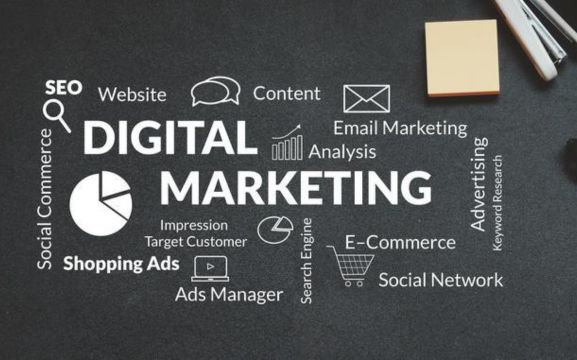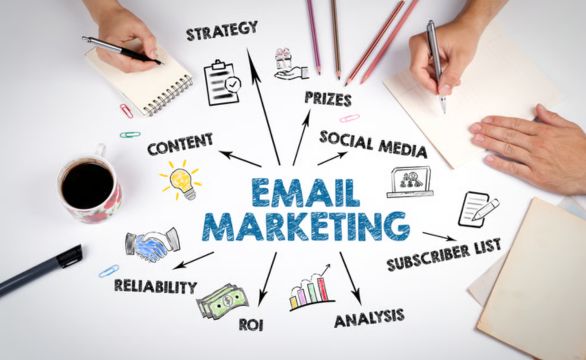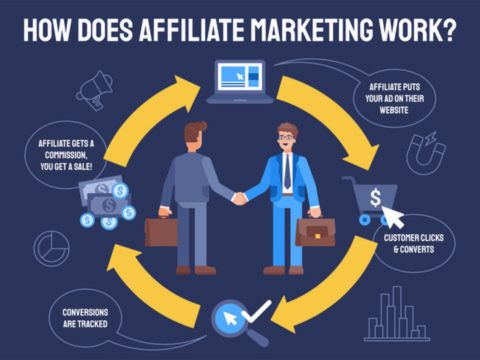Airbnb: Airbnb uses SEO techniques to appear at the top of Google search results when users search for "best vacation rentals" or "luxury apartments in Paris". They use high-quality content, optimized landing pages, and backlinks to improve rankings.
Let’s dive into the different types of SEO, along with real-world examples to help you understand how each type works in practice.
On-Page SEO refers to optimizing the individual pages of your website to improve their rankings in search engine results. This involves all the content and HTML elements that you directly control on each page.
3. Pay-Per-Click (PPC) Advertising
PPC (Pay-Per-Click) is an online advertising method where you pay money every time someone clicks on your ad. It's like placing an ad on a website or search engine, and you only get charged when someone clicks on it, not just when they see it.
Example:
If you're selling shoes online, you can create an ad that shows up when someone searches "buy running shoes." When a person clicks on your ad to visit your website, you pay a small fee.
So, in short: You pay for each click your ad gets, and that's why it's called Pay-Per-Click.
How PPC Works:
- Google Ads: Advertisers bid on keywords to appear in search results. For instance, if someone searches for "best SEO tools," an advertiser like SEMrush might have an ad that appears at the top.
- Facebook Ads: Create highly targeted ads based on user demographics, interests, and behaviors.
Let’s explore the different types of PPC ads in detail, along with real-world examples to help you understand how they work.
1. Search Ads:
Search ads are the most common type of PPC ad. These ads appear on search engine results pages (SERPs) when users search for specific keywords. They're typically text-based and placed above or below organic search results.
How It Works:
- You bid on keywords relevant to your business (e.g., "best running shoes" for a footwear store).
- When someone searches for that keyword, your ad appears in the search results.
- You pay when the user clicks on the ad.
Example:
Nike: Nike might bid on keywords like "buy running shoes" or "best running shoes for women." If a user searches for these terms, Nike’s ad might appear at the top of the search results with a message like, "Shop the Latest Running Shoes Collection at Nike.com."
Why It Works:
Search ads target users who are actively looking for something, making them highly relevant and conversion-friendly.
2. Display Ads:
Display ads are visual ads that appear on websites within the Google Display Network (GDN) or similar platforms. These ads can be banners, images, or videos and are placed on third-party websites related to the user’s interests, often appearing as part of content.
How It Works:
- You design banner ads or image-based ads to run on websites within the GDN.
- Ads are targeted based on user interests, browsing history, or demographics (e.g., a user who recently searched for travel deals might see ads for hotels or flights).
Example:
Airbnb: Airbnb might show display ads for vacation rentals when a user visits travel-related websites or blogs. The ads could feature an eye-catching image of a beautiful rental property and a call-to-action (CTA) like "Book Your Dream Stay Today!"
Why It Works:
Display ads help increase brand awareness and visibility. They work well for remarketing (re-engaging users who’ve previously interacted with your site).
3. Video Ads:
Video ads are a form of PPC advertising that appear on platforms like YouTube, Facebook, and Instagram. These ads can be skippable or non-skippable and are a great way to engage users with dynamic content.
How It Works:
- You create video ads that are displayed before, during, or after a user’s chosen video on platforms like YouTube.
- You pay when users watch or engage with your video ad (e.g., clicking the CTA or watching the entire ad).
Example:
Coca-Cola: Coca-Cola often runs video ads on YouTube, especially around major events like the Super Bowl. A typical Coca-Cola ad could feature a heartwarming storyline and end with a CTA like "Share a Coke with Friends," encouraging viewers to visit the website.
Why It Works:
Video ads are highly engaging and can convey complex messages or emotions more effectively than text or images alone. They work particularly well for brand-building and product launches.
4. Shopping Ads:
Shopping ads are designed specifically for e-commerce businesses. These ads appear on search engine results pages and showcase product images, prices, and store names. They are ideal for users searching to make a purchase.
How It Works:
- You create a product feed for your store that includes product images, descriptions, and prices.
- When a user searches for a specific product (e.g., "red leather jacket"), Google displays the product's image, price, and store link in the search results.
Example:
Best Buy: When a user searches for "smartphone deals," Best Buy’s shopping ad might show up with an image of a smartphone, the price, and a link to purchase it directly from their store.
Why It Works:
Shopping ads are highly visual and often lead to higher conversion rates because users can immediately see the product and its price.
5. Native Ads:
Native ads blend seamlessly with the content of the website or platform they appear on. They are designed to match the format and style of the surrounding content, making them less intrusive and more engaging for users.
How It Works:
Native ads appear on websites or social media platforms as sponsored content or articles. The goal is to provide value while subtly promoting your product or service.
Example:
The New York Times: An article titled “10 Tips for Healthy Living” might feature a native ad for a health supplement. The ad would be formatted to look like an editorial piece, making it less obvious that it’s sponsored content.
Why It Works:
Native ads feel more organic and are less disruptive than traditional display ads, leading to higher user engagement and click-through rates.
6. Remarketing (Retargeting) Ads:
Remarketing ads target users who have previously visited your website but didn’t complete a desired action (e.g., purchasing a product, signing up for a newsletter). These ads are shown to those users as they browse other websites or social media platforms.
How It Works:
- You install a remarketing pixel on your website that tracks visitors who didn’t convert.
- Ads are displayed to these visitors as they browse other websites or social media platforms, reminding them of your product or service and encouraging them to return and complete their purchase.
Example:
Amazon: After browsing a product on Amazon (like a specific laptop), you might see remarketing ads on other websites showcasing that same laptop or related products, encouraging you to return and buy it.
Why It Works:
Remarketing ads are effective because they target users who have already shown interest in your brand. It helps bring potential customers back to your site and increases conversion rates.
7. Social Media Ads:
Social media platforms like Facebook, Instagram, LinkedIn, and Twitter offer a variety of PPC ad options. These ads can take the form of text, images, or videos and are designed to target users based on demographics, behaviors, and interests.
How It Works:
- You create ad campaigns on social media platforms where you can target users by location, age, interests, or behaviors (e.g., users who like fitness pages might see an ad for a gym or workout gear).
- You pay based on clicks, impressions, or engagement.
Example:
Nike: Nike could create a Facebook ad targeting users interested in fitness, showing a video ad of a new workout gear collection. The CTA might encourage users to click and shop on their website.
Why It Works:
Social media ads offer precise targeting, making them effective for brand awareness and conversions. Ads are often integrated into the user's social feed, making them less intrusive and more engaging.
8. Instagram and Facebook Story Ads:
Story ads appear in between user stories on platforms like Instagram and Facebook. These full-screen, vertical ads are typically video-based and can be interactive with features like swipe-ups, polls, or links.
How It Works:
You create video or image ads that appear between the stories that users watch. The CTA could be a swipe-up to a landing page or product page.
Example:
H&M: H&M might show an Instagram story ad featuring their new fall clothing collection. Users can swipe up to view more products and make a purchase directly from Instagram.
Why It Works:
Story ads are immersive and full-screen, which captures the viewer’s attention. They’re particularly effective for showcasing new products or promotions and drive immediate action.
4. Content Marketing:
Content marketing is all about creating and sharing valuable content to attract and engage your audience.
Example:
HubSpot: HubSpot, a leading marketing software company, excels in content marketing. They offer blogs, free guides, eBooks, and webinars on inbound marketing, which helps them generate leads by providing helpful information.
Types of Content:
- Blogs: Articles providing solutions, insights, or information relevant to your audience.
- Videos: How-to tutorials, product demonstrations, or case studies.
- Infographics: Visual representations of data or complex concepts.
- Ebooks and Whitepapers: In-depth resources that require email sign-ups, generating leads.


